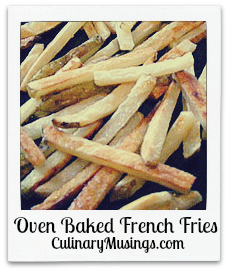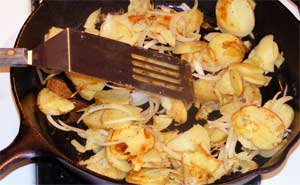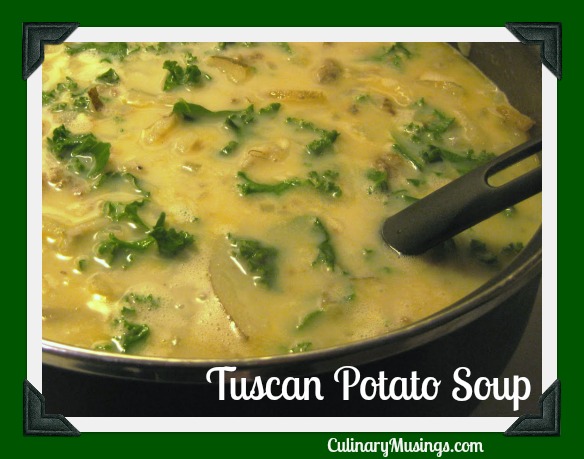Most people tend to think of kitchen staples as pretty interchangeable. Does it really matter what kind of salt, flour, rice, etc. that you choose for a dish? Experienced cooks know that the answer to that is a resounding "Yes!"
Flour is the most basic baking ingredient and has a major impact on the taste and quality of baked goods. It has the power to make or break a recipe.
Wheat flour is the most commonly used type in the United States, and this post discusses the different types of wheat flour only. But just about any grain, nut, seed, or even dried vegetable can be ground into flour. They're often mixed with wheat flour to get the desired texture or flavor.
Important Flour Terms
Bleached and Unbleached
Bleached flour is bright white because it's bleached using chlorine and peroxide, which causes some cooks to shy way from it. Who wants bleach in their food?
Well, sometimes you may. Aside from color, the bleaching process affects texture as well. The bleach weakens the gluten, so the flour absorbs more liquid. This is particularly important in cake baking, where bleached cake flour helps produce cakes that are moister, higher, and fluffier.
Unbleached flour produces a slightly heavier baked product. I like it for carrot cakes, applesauce cakes, and other recipes that need a good, dense, chewy texture.
Gluten
The amount of gluten in flour affects the texture of the finished product. High-gluten flour is referred to as "hard" flour, while low-gluten flour is called "soft" flour.
When water or liquid is added to the flour along with some heat, it combines with protein in the flour to form gluten. The protein content in flour ranges from 6% to as high as 14%. Higher protein flours will produce a stronger gluten.
Baked goods made with high-gluten have a firmer texture (think hard rolls), while recipes made with a low-gluten flour will be tender and have a soft crumb (think chiffon cake).
Types of Wheat Flour and Their Uses
All-purpose
All-purpose flour is made by blending different types of flour into a mixture that works ok for a variety of uses. It's a good thing to keep in the pantry because it's easy to find in the supermarket and is versatile enough to use in a wide variety of recipes.
Most all-purpose flours are a mixture of hard and soft flour, and the protein content depends on the brand. "Southern" brands like White Lily and Martha White tend to have more "soft" flour with lower protein content than most national brands.
Self-rising
Self-rising flour has baking powder and salt added. Cooks like it because it's handy; just scoop out the amount you want and don’t worry about having to measure baking power, salt, and/or baking soda separately.
Results vary though, because recipes call for different amounts of each. Also, the amounts of leavening included vary between brands of flour. Using self-rising flour in every recipe is like buying the same size shoes for every member of a large family.
Cake flour
Cake flour is generally made from soft, bleached flour with relatively low protein content – 8% or less in most cases. Some recipes specifically call for cake flour, and using it will give your cake a better texture. But unless you're baking a cake that needs a light and fluffy taste and texture, it's ok to use basic all-purpose flour.
Pastry flour
Pastry flour is much like unbleached cake flour, except that it often has en even lower protein content. Doughs and batters made with pastry flour absorb a lot of liquid and will be really soft when first mixed. Soft cookies have a delectable texture when baked using pastry flour, but unfortunately, it's hard to find on store shelves.
You can generally purchase it at specialty stores though. The cost might be too high for everyday cookies, but for special occasion cookies and pastries, pastry flour is worth the effort to locate it and the extra cost.
Bread flour
Bread flour is made from hard wheat that has a high protein content – usually about 12%. Higher protein encourages gluten development in the bread, which helps the bread rise and provides structure and texture. Protein content varies among supermarket brands. For instance, King Arthur bread flour contains 12.7% protein, which it claims is higher than other brands.
Use bread flour for, well, breads! Although it's possible to bake breads using any type of flour, bread flour helps you consistently get good results. Use bread flour when preparing loaf type breads, flat breads, or dinner rolls. Most bread recipes call for it specifically.
High gluten flour
High gluten flour has higher protein content than bread flour – as much as 14%. It's used for bagels, pizza dough, and other breads that need a strong texture. Generally more expensive than other flours, high gluten flour is also the main ingredient in homemade seitan, a staple for some vegetarians.
If you bake using high gluten flour, pay close attention to the texture of the dough. Unless the recipe you're using specifically calls for high gluten flour, the amount of liquid specified may be inadequate. Flours with higher protein content often need additional liquid added during kneading.
Depending on the brand, high gluten flour may be treated with additives that encourage the development of gluten.
Stocking Your Pantry
So what kind of flour should you keep on hand? That depends on how often you bake and what you bake. At a minimum, keep a bag of all-purpose flour on hand. You can use it for most cakes, cookies, quick breads, and also for thickening sauces. But if you plan on baking bread regularly or want to turn out some really outstanding cakes or pastries, it's no big deal to keep a couple of types of flour in your pantry.
Flour keeps for a long time. Be sure it's in a sealed container to avoid any insect infestation though. Grain moths love to invade cupboards and wreak havoc on grain and cereal products.







Something on Food Network today indicated one could turn unbleached flour into flour without gluten. Is this for real?
Hmmm…good to find out, there were definitely two or three items which I had not thought of before.
I’m going crazy. I’m trying out Chinese stretched noodle dough recipes–one recipe calls for baking soda as a so-called leavener?? that also may aid in the stretch-factor—-the idea is having high gluten so that when the dough is kneaded thoroughly it will become very stretchy and won’t break when stretched….ANY ideas for an un-schooled flour person would be greatly appreciated….Thanks.. 🙂
Bread flour has higher amounts of gluten, pastry flour the lowest, AP (all purpose) flour is in the middle. Whole wheat flour includes the bran of the wheat berry, so ounce for ounce is lower gluten as well. Best bet: use white bread flour to maximize gluten. As far as the baking soda is concerned, this is sodium bicarbonate, a chemical leavener (in contrast to yeast as an organic leavener). Baking Soda will create carbon dioxide gas when it reacts with the moisture in the dough to lighten the texture. This is a good thing with a high-gluten dough, which could othewise become quite chewy.